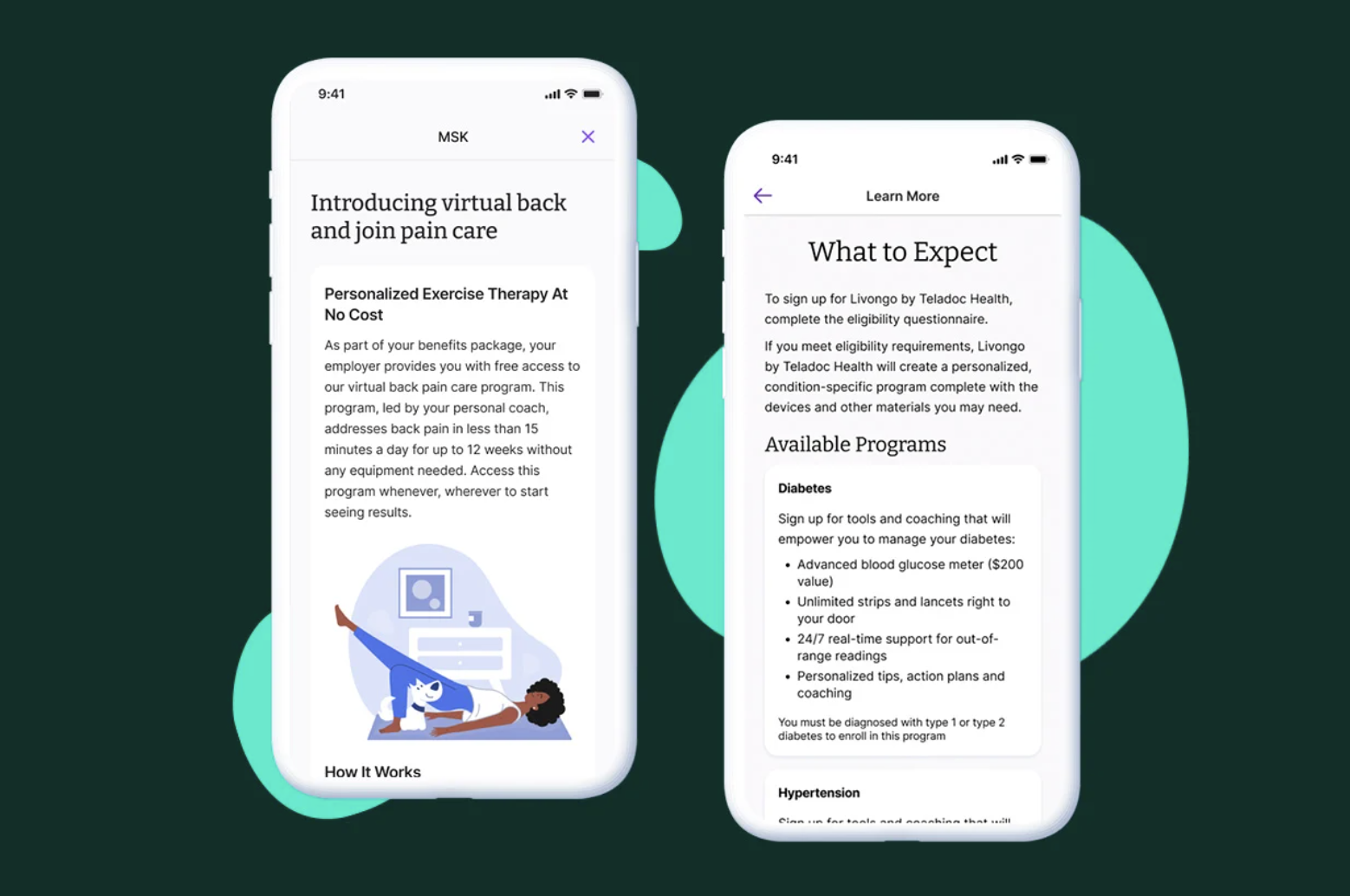HMO vs PPO – Which is Better?
Selecting the best health plan option for you and your family can be a confusing task if you are unfamiliar with or don’t understand the ins and...
Connected Navigation Platform
Guiding to high-value care
Behavioral Health
Foster a mentally healthy workplace
EAP
Supporting holistic wellbeing
Virtual MSK Care
Reimagining musculoskeletal care
Virtual Primary Care
Powered by smart navigation
Surgery Centers of Excellence
Best-in-class surgical outcomes
Virtual Urgent Care
Immediate care, any hour of the day
Chronic Care
A new approach to chronic care
Integrations
Flexible to any strategy

This post provides an introduction to funding in a coalition, also known as captive-funding, and discusses best practices from leaders in the field.
Coalition use is skyrocketing as employers in coalitions can see double digit savings and the agencies embracing coalitions are attracting new business. The primary sources of coalition success are reducing fixed cost, spreading risk, providing stability and leveraging solutions like concierge services to manage costs.
To break this down, let’s start with a game. You have 3 options:
Which would you choose? In the first option, you lose $40 every time. In the second option, your average payout is $37.5. The clear winner is Option 3, where your average payout is $32 and you have a low chance of paying $45.
This game is a simplified version of choosing between fully insuring your plan, level/self-funding, and self-funding in a coalition. When you fully insure, you’re basically paying an insurance carrier to not play the game at all. You have no variable risk with excessive claims but you pay dearly for that privilege while rates climb 10-20%. Employers are starting to get savvy about how much they can gain by taking control of the game. With self-funding, you reduce your fixed costs and gain control but end up accepting more risk in claims. This inherent risk comes from having a smaller employee pool, something a company like Apple wouldn’t have with its 116,000 employees. Self-funding is like the single coin flip in this game. The last option and the one with the least risk while reducing costs is joining a coalition. A coalition works by combining multiple companies to create a more predictable single pool of risk. A few dozen companies could band together in a coalition and reduce their risk in a way similar to Apple.
Coalitions have been around for decades in other lines of insurance, and since the early 2000’s companies like Roundstone have proven that coalitions can break rising medical cost trends.
The client cost savings and rate of growth for agencies embracing coalitions is so great that they are actually turning down employers as clients. There’s no doubt that coalitions are here to stay.
Two conclusions I’ve made from working with our benefit advisor partners:
Most relevant to small and medium-sized businesses is the turnkey stop loss captive solution. Companies like Roundstone have already done the heavy lifting in legal, administration and compliance to set up the coalition. Employers can then remit a premium and minor collateral contribution to join and gain access to the risk pool. They also gain transparency into claims and buying power for stop-loss and other products. How it works:
Using alternative funding structures like a coalition is only one aspect that makes these programs a more cost-effective solution. Coalitions also provide greater transparency into and control over claims spend. From that point, you need to invest in strategies and tools that address claims dollars. Mike Schroeder, President and Founder of Roundstone, made this message clear at Roundstone’s recent Captive Forum. After careful selection, Schroeder provided attendees access to vendors like HealthJoy with the latest innovations in controlling healthcare costs.
Andy Neary of Captivated Health emphasizes the need to focus on claims: “If you’re going to self-fund and aren’t proactively managing your claims, don’t self-fund.” Captivated Health, like Roundstone, is successful in no small part because of this philosophy. Neary has a simple equation for healthcare costs:
Number of units of care x Cost per unit of care = Total Healthcare Cost
According to Neary, wellness programs reduce the number of units of care and concierge solutions address the cost per unit. You need to have a program in place to help compare price and quality to choose the best option.
Mick Rodgers of Axial Benefits Group in Burlington, MA is a leader in leveraging coalitions to reduce client healthcare costs. Mick takes an incremental approach that prepares clients for participation in a coalition. “Our clients hire us to get into one of our coalitions; however, some may not be ready right away. In that case, we lay out a detailed plan to get them there. The extra time allows us to study the group’s utilization data so we can really affect and begin to lower their claims. Once that work is done it’s a seamless transition to the coalition model.” The proof is in the premiums, as Axial’s clients spend less than half on a PEPY (per employee per year) basis than their industry counterparts.
John Sbrocco of The Benefit Bureau has coupled the Achieve Health Alliance coalition with employee guidance tools to the advantage of clients and agency growth. Sbrocco points out the need to look at claims cost: “How can employers expect to reduce their healthcare spend without addressing the underlying factor – the claims!” Without transparency, employers are navigating the complex world of healthcare “with a blindfold on.” Once you change the funding structure, you take the employer’s blindfold off and see that employees are even more in the dark on how expensive their choices are. Sbrocco touts the need for concierge services: “You have to give employees direction on where to go based on quality and price transparency because that’s a lot less disruptive than a 10% rate increase with a higher deductible.”
Some of the more experienced players in the field are helping to bring up the next crop of leaders. Mick Rodgers has advised Nolan Waterfall on Waterfall’s coalition-focused agency Campfire Health on the west coast. Waterfall is combining psychology, technology and education to identify and treat the causes of rising healthcare costs. “In the fully insured market, you’re treating symptoms. Cost – that’s a symptom. With a coalition, you identify causes of increasing costs. Then you can use technology and other programs to treat them.”
Sam Walters, a regional practice leader at Roundstone, introduced me to the details of captive funding. Walters’ example sums up the benefits of joining a coalition: “I’ve seen groups paying $1.1 million in premium and only $500 thousand in claims. Those groups get 15% rate increases. That’s almost criminal. In a coalition, they’re keeping that money.”

Selecting the best health plan option for you and your family can be a confusing task if you are unfamiliar with or don’t understand the ins and...

During the COVID-19 pandemic, virtual urgent care’s resurgence offered an alternative pathway to care. It changed consumer insights on the topic,...

How connecting the brain and body fosters better results Musculoskeletal (MSK) conditions affect millions of Americans each year. Representing over...